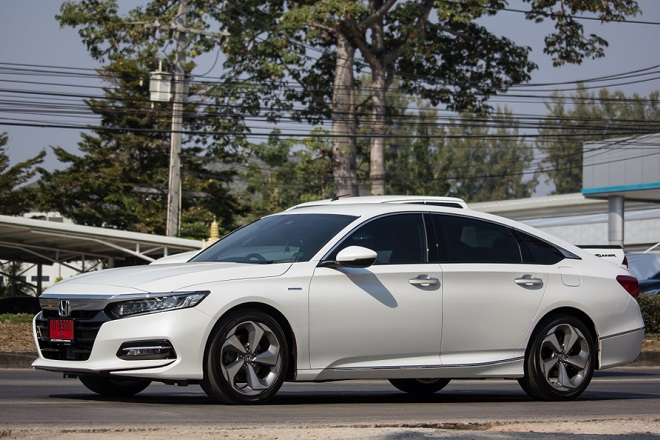As the temperature rises, we all look for ways to keep our homes, vehicles, and workspaces cool and comfortable. For this, we opt for different ways to keep our living style comfortable. To reduce heat, there are a variety of options available.
There are many options available for reducing the heat, but the most common option that gained a lot of popularity is window tinting. The window tint protects you from the scorching heat and gives you a comfortable lifestyle. The window tint is designed in such a way that it absorbs or reflects the solar heat.
In this article, we discuss how window tinting helps reduce heat and the different types of window tints that help to reduce heat.
What is Window Tint and What is its Purpose?
A window film is a layer of transparent thin film that is applied to homes, cars, workspaces windows for protection from UV rays. The window tint that is applied to the windows to reduce the heat is made up of material like polyester or metalized coating.
The window tint’s main purpose is to protect you from harmful UV rays, and the window tint can block up to 99% of the solar UV rays. Another benefit of the window tint is that it enhances safety and privacy.
How does Window Film Reduce Heat?
Heat transfer in 3 ways i.e. convection, conduction, and radiation. The most important mode of heat is radiation. The following are the ways that window film helps to reduce heat.
-
Blocking Solar Radiation
Solar radiation is the main source of heat gain in any vehicle, home, or workspace. The heat coming from the sun emits energy across a spectrum of wavelengths including ultraviolet radiation, infrared radiation, and visible light.
The UV rays coming from the sun are considered the most dangerous rays that cause harmful effects on the skin and cause many skin diseases. The UV rays can also cause damage to the furniture, furnishing, and interior of the homes and vehicles.
If you are applying window tint in your homes and vehicles, the window tints can block up to 90% of the harmful UV rays and also block 80% of the heat generated from the infrared rays.
-
Eliminate Excessive Heat
The way the window film is made ensures that the sun’s excessive heat is eliminated. For privacy, curtains and shades work best, but they can’t keep out the sun. The window tint also blocks the excessive sunlight and gives you more privacy.
-
Reflective Properties
Window film is designed in a way that it has reflective properties. The reflective properties in the windows are designed in such a way that they block and reduce heat by reflecting the heat away from the windows. This reflective property of the window tint is useful in areas with intense sunlight.
Insulation Properties
The most common way that the window film helps to reduce heat is through the insulation. In summer, the outside temperature is extremely high, in this case, the window tinting acts as an insulating layer and keeps the temperature maintained inside the building.
How does Heat Reduction Window Film Work?
The window film is used for heat reduction and it is the simplest and the most cost-effective way, that the window film blocks UV rays and solar heat. This heat-reduction window film is made up of many layers that are used to reduce the heat. But the main function of these layers is to reduce the heat and act as a heat reflector.
The outer layer of the window film is made of durable material that protects from external factors like harsh weather, dust, and debris. The middle layer protects you from the sunlight, and this layer reflects the sunlight and prevents it from entering your space.
The innermost layer of the window film is made of adhesive material that is adhered to the glass surface and this inner layer provides extra insulation and keeps the interior cool.
Types of Window Film that are Used to Reduce Heat
Different types of window film that are used to reduce heat are.
-
Solar Control Window Film
The solar control window film is one of the best types of window film that is used to reduce heat. It is a transparent layer that is applied to the windows and these solar window tints are designed to block the UV rays and reduce the heat gain.
The solar control window film is an affordable option to upgrade your windows. Solar control window films are available in many colors and shades, all of these colors and the shades have the same purpose of reducing the heat.
-
Decorative Window Film
Decorative window film is another type of window film that is applied to the windows to reduce heat. The decorative window film gives dual benefits: this film gives a decorative touch to the windows while giving you privacy and reducing the heat gain.
The decorative window film is the most affordable option, if you want to decorate your windows and this window film turns the basic window into a beautiful window, moreover also provides privacy.
-
Ceramic Window Film
The ceramic window film is the most commonly used window film and the ceramic window film is the newest window technology that is applied to the windows.
The ceramic window film is not made of dyed or metal like most of the window film is made up of that metal. This window film is famous for its heat reduction properties and insulating capacities.
-
UV-blocking Window Film
The UV-blocking window film is another type of window film that is used to reduce significant heat. The UV-blocking window film can block 99% of the harmful UV rays.
This film reflects the scorching heat and the sun rays that shine on your windows while keeping the interior cooler. The UV-blocking film also reduces the glare that creates a disturbance in your tasks.
What Type of Window Tint Reduces How Much Heat?
There are different types of window tint available. So it is very important to understand how much heat is reduced by different types of window tint.
- Ceramic window film: reject the heat up to 95%.
- Solar control window film: reject the heat up to 97%.
- Decorative window film: reject the heat by 30% to 80%.
- UV blocking window film: reject the heat up to 99%.
- Carbon window film: reject the heat up to 60%.
How to Choose the Right Window Tint for Heat Reduction?
Choosing the right window tint for your window is essential. There are many factors to consider when choosing the right window tint for heat reduction.
One of the most important factors to consider when choosing the right window tint is the type of the window. Another factor is the climate. The amount of heat reduction also depends on the climate, many places face scorching heat and sunlight all the time and need the best window film that reduces the major amount of heat reduction.
Extreme weather conditions, like the hotter climate, may require a darker type of tint to reduce the significant amount of heat, while the cooler climate may require a lighter type of tint.
Another important factor in window tint is the budget. The window film prices may vary depending on the size, quality, and the location where you live. If you are looking for a budget-friendly option then the dyed window film is the best option for you, so it is very essential to choose the one that fits your needs as well as the budget.
Last and the most important factor that reduces heat reduction is the proper installation. So, for the installation, it is best to choose the professionals for this process.
Additional Benefits of Window Tinting
Other than heat reduction, there are many other benefits of window tinting.
- Enhanced privacy: The window tinting helps to increase privacy and makes it difficult for others to look inside the car.
- Aesthetic appeal: The window tint can give your home and vehicle windows an aesthetic appeal and enhance the appearance of the windows.
- Improved safety: One of the most important benefits of applying window tint is that it improves safety. In case of any accident, the window film can hold the shattered glass together, thus this reduces the risk of injury.
- Energy saving: The window film not only enhances privacy but also helps to reduce energy costs. Thus it reduces costly energy bills in summer.
- The better resale value of the property: When you apply the window tint on your vehicles and the property, it enhances the property and the vehicle value.
Conclusion
There are many ways that window film helps to reduce heat reduction as the window film blocks solar heat, absorbing and emitting the heat, and window film has insulating properties. Window film is a cost-effective way to reduce heat.
There are different types of window film available, all these window films have heat reduction properties. When choosing the right window tint, there are many factors to consider like the type of window, location, budget, and the most important factor is the climate.
Avery Violet is a passionate advocate for creating comfortable living environments amidst rising temperatures. With a keen interest in innovative solutions, Avery explores the effectiveness of window tinting in reducing heat and enhancing lifestyle comfort. Through insightful discussions on various types of window tints and their heat-reducing properties, Avery empowers readers to make informed decisions for their homes, vehicles, and workspaces.




